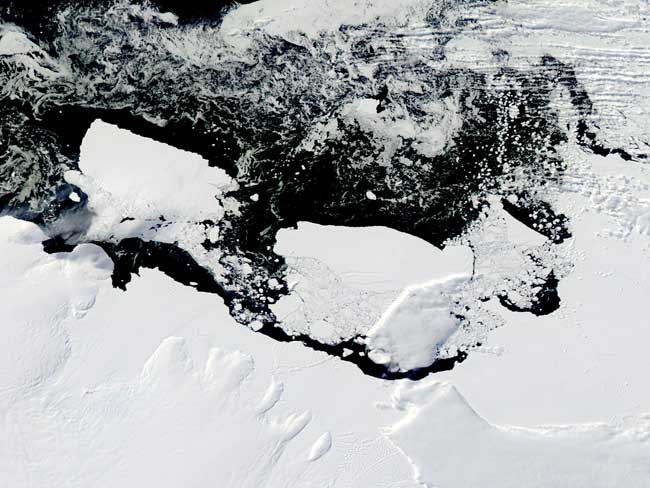Huge Icebergs Imaged from Space

A newly created Antarctic iceberg and the giant berg that knocked it free are both visible in a new satellite image.
The two massive icebergs, each as big as a small state, drifted along the coast of East Antarctica when imaged on March 8.
In mid-February 2010, the Rhode Island-sized Iceberg B-09B collided with the protruding Mertz Glacier Tongue along the George V Coast. The Mertz Glacier was already in the process of calving an iceberg when the arrival of the B-09B accelerated the process, leaving two icebergs the size of small states off this part of Antarctica's coast.
Scientists say the collision is major event but a normal part of iceberg creation.
Between each iceberg and the coast float myriad smaller icebergs, many of them created in the collision.
- Is Antarctica Falling Apart?
- Photo Album: Antarctica, Iceberg Maker
- 101 Amazing Earth Facts
{{adsense|premier|none}}
Get the world’s most fascinating discoveries delivered straight to your inbox.



